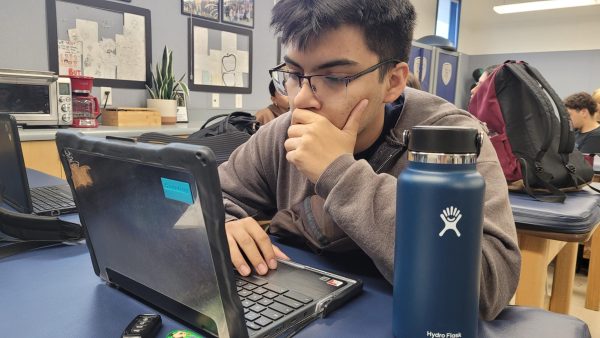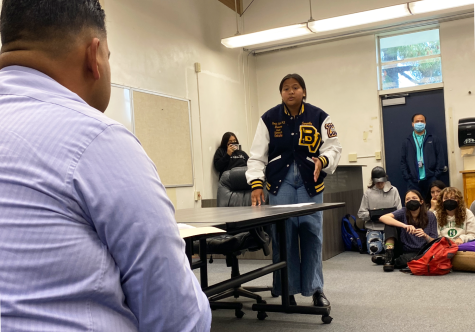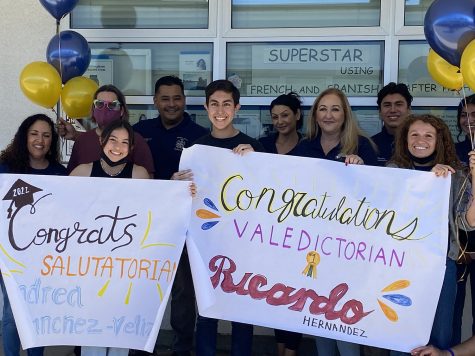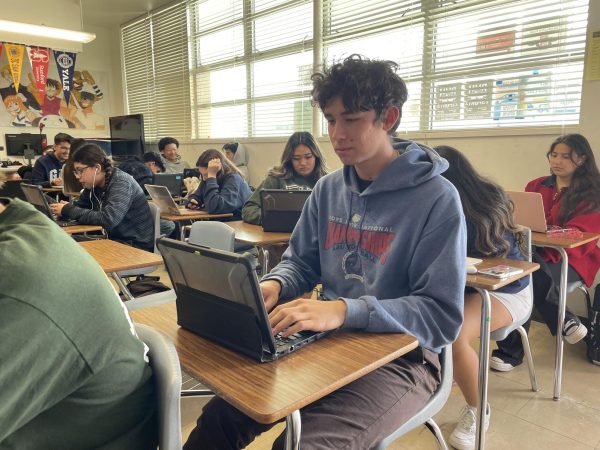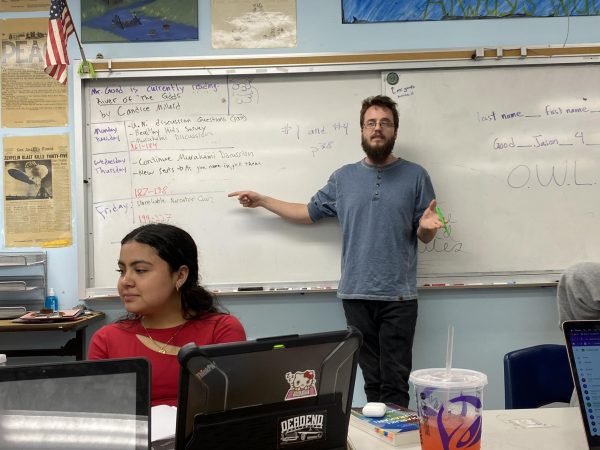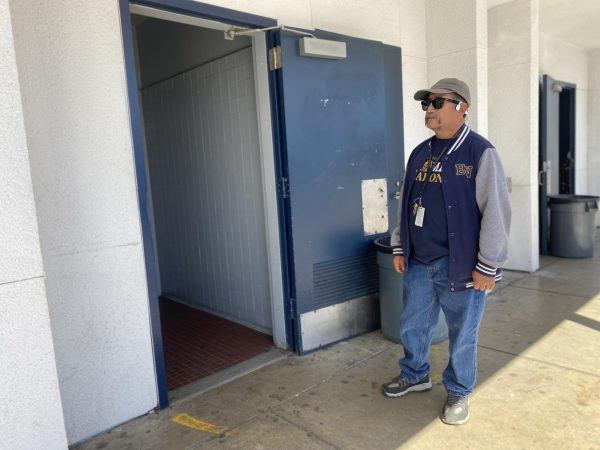Science labs in the virtual classroom
Before the COVID-19 pandemic led to the closure of Bonita Vista High (BVH), students would enter their science classes with resources available to conduct lab experiments. Students were assured assistance and safety precautions by their teachers, but as distance learning continues, many BVH science teachers have resorted to using online platforms and modify at-home activities to perform labs.
Regular and Accelerated Biology teacher Joseph Szakovits has adapted how he assigns labs and how students perform them. Szakovits expressed that since he is not able to supervise students as closely, he cannot ensure their safety or guarantee that students will have the materials needed to complete the labs normally done in class. As a solution, Szakovits has substituted hands-on experiments with either virtual labs or experiments he conducts during synchronous time.
“We have done a lot of virtual labs through programs like Gizmos. Those labs offer a lot of basic science skills; they have the main hypothesis and predictions [and] it [has students] draw conclusions from evidence. We can get a lot of those analytical skills in doing things like that, but it’s not the same as being able to actually do experiments,” Szakovits said.

Although Szakovits has decided to avoid having too many at-home experiments, International Baccalaureate (IB), Advanced Placement (AP) and Accelerated Biology teacher Michelle Mardahl-Dumesnil, Ph.D., and Accelerated Biology and IB Environmental Systems and Societies (ESS) teacher Jennifer Ekstein have assigned several at-home labs.
“For Accelerated [Biology], [students] did something at home where they tested masks, and for IB [ESS] they had to make their mesocosms themselves with materials around their house,” Ekstein said. “Some things are digital and some things are hands-on; it’s a good way to strike a balance for them. None of the labs that are hands-on that they have put together are supposed to cost anything. They are supposed to go around their neighborhood safely or utilize things around the house.”
IB Biology student and senior Faith Talamantez conducted several labs throughout the semester, both online and at home. One at-home lab in particular involved growing plants.
“For the plant growing lab, we were given a lot of freedom as to what kind of plant we wanted to grow and how we wanted to grow it. It was just a matter of recording data and following the scientific process, but we were given a lot more freedom than we would normally be given because, without a teacher there, they can’t really execute the same level of involvement or instruction they normally would in school,” Talamantez said.
Talamantez indicated that lab experiments this year have been very underwhelming for her. These labs have not pushed her to gain skills she normally would have acquired during in-person classes.
“I feel less accomplished because doing labs is more about the hands-on experience and understanding how things are working, but when it is all the online procedures, you’re not really seeing it as much as you would in real life with a teacher and classmates,” Talamantez said. “It feels like we’re not really doing actual science, [but] we’re playing like an online game almost.”
According to Mardahl-Dumesnil, virtual labs do not teach students how to troubleshoot. She explains how in her prior years of teaching if students’ experiments did not have the results they expected, they would have to predict why and what they could have changed to make it better. However, now that labs are online, students are not able to do that.
“In the virtual labs they have already optimized it for you and made it artificial. Students don’t understand how good their measurements are, what kind of limitations [they had] and how to problem solve,” Mardahl-Dumesnil said.
Another common issue that hinders the ability to perform virtual labs is that many programs rely on Adobe Flash to work and by December, it will no longer be available.
“I want to almost email Chrome to extend [Adobe Flash] another year because a lot of [online] labs still use [it],” Ekstein said. “My biggest concern is access to the technology. I don’t have a concern about making or developing labs, but in the virtual environment it’s just [a matter of] if the technology will be available in the future.”
Furthermore, Mardahl-Dumesnil conveyed her concerns about writing recommendation letters in the future. She is currently writing recommendation letters for her students that she had before distance learning. Since they were able to perform labs in person, Mardahl-Dumesnil can explain their ability to resolve difficulties, work with other students and develop their leadership.
“I’m not gonna be able to say that about the freshmen. They didn’t take the experiment all the way. They wrote [about] half a lab, but they didn’t actually get to do it. It’s different if you do it [in person]; you can explain it so much better because you own it, but if it’s put [online for you], it’s too abstract,” Mardahl-Dumesnil said.
Ekstein, Mardahl-Dumesnil and Szakovits all assert that these labs are important factors in every science class and that regardless of distance, teachers strive to provide what they can for students. However, they emphasize that these virtual labs cannot create the same environment and foster the same skills as in-person labs.
“The thing about science is that while yes, there is certain content that needs to be covered, at the end of the day science is a process. The ability to think scientifically is one of the major things we hope that our students are going to get out of their experience in these classes. And the way in which [many students] get that is by having things that they can see, touch and work with to actually introduce a variable and measure the effect of it,” Szakovits said. “[It is] easy to simulate those things virtually, but again there is often a barrier to it.”
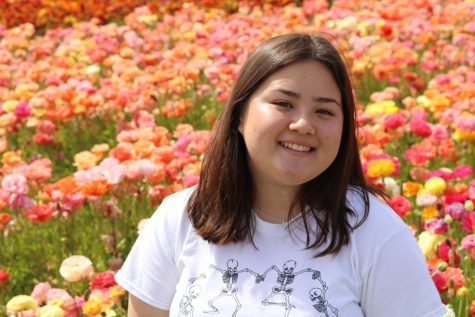
I am currently a senior at Bonita Vista High and this is my third and final year as a member of the Crusader. I enjoy journalism because it allows me to...
I am a junior at Bonita Vista High, and a second year staff member on the Crusader. I love being able to meet new people, and having conversations with...
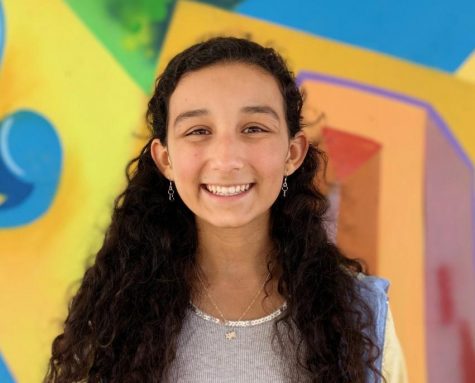
I am a senior at Bonita Vista High and a fourth year staff member on the Crusader. I am now co-Editor in Chief, and previously was News Editor, Features...


